The Dodecanese islands completely changed how I see Greek island hopping. These 15 main islands in the southeastern Aegean Sea have something you just don’t get in the more famous Cyclades—a wild mix of medieval castles, volcanic landscapes, and that authentic Greek vibe, all without the crush of crowds.
During my three weeks bouncing between Rhodes, Kos, Nisyros, Symi, and six more Dodecanese islands, I realized this region really does offer the best island hopping in Greece—especially if you crave history, adventure, and real local connections. I wandered through UNESCO sites in Rhodes Old Town and hiked across the volcanic crater on Nisyros. Each island felt totally different and offered surprises I never found anywhere else in Greece.
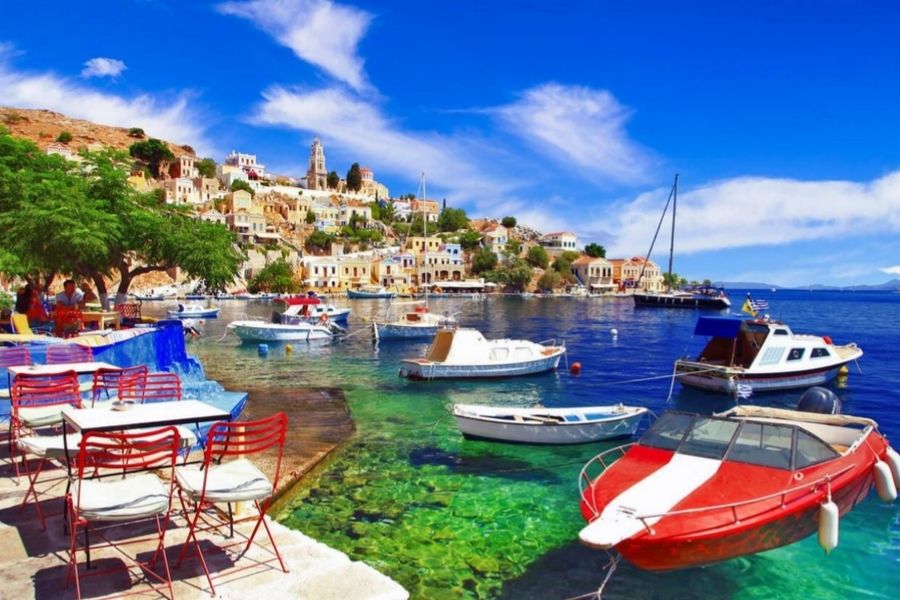
Figuring out the logistics seemed daunting at first. But once I got the hang of ferry routes, timing, and which islands matched my love of history and the outdoors, everything fell into place. Honestly, it turned out way easier than I expected, and the payoff? So worth it.
How I Planned My Dodecanese Island Hopping Route
I had to think carefully about my starting point and ferry connections. Picking the right airport and using the best booking tools made a huge difference for a smooth island-hopping trip.
Choosing Departure Points: Athens, Crete, and the Turkish Coast
Three main starting points stood out for this trip. Athens has the most flight options, but the ferry from Piraeus port to Rhodes? Over 15 hours. That’s a long haul.
Flying straight into Rhodes or Kos made way more sense with my schedule. Both have international airports and direct flights from all over Europe. I saved a whole day by skipping the Athens ferry.
Crete offered another route, mainly from Heraklion. Ferries run from Crete to some Dodecanese islands, but not as often as from Athens.
The Turkish coast? That one surprised me. Some Dodecanese islands sit so close to Turkey, you can hop over for a day trip or catch a short ferry. It definitely added new possibilities.
In the end, I picked Rhodes. Flights were easier, and it made a perfect jumping-off point for the rest of the islands.
Ferry and Flight Logistics for Island Travel
Ferries really shaped my route. All 15 main Dodecanese islands have proper ports and regular service.
Rhodes and Kos turned into my main hubs. From there, I could reach most smaller islands without too much backtracking.
A few islands need extra planning. For instance, Telendos only connects by tiny boats from Kalymnos. It cost me 3 euros return, but they only run when locals want to go.
Booking ferries isn’t always straightforward. Some companies let you reserve online, but others like Saos Ferries only sell tickets in person at the port or a travel agency.
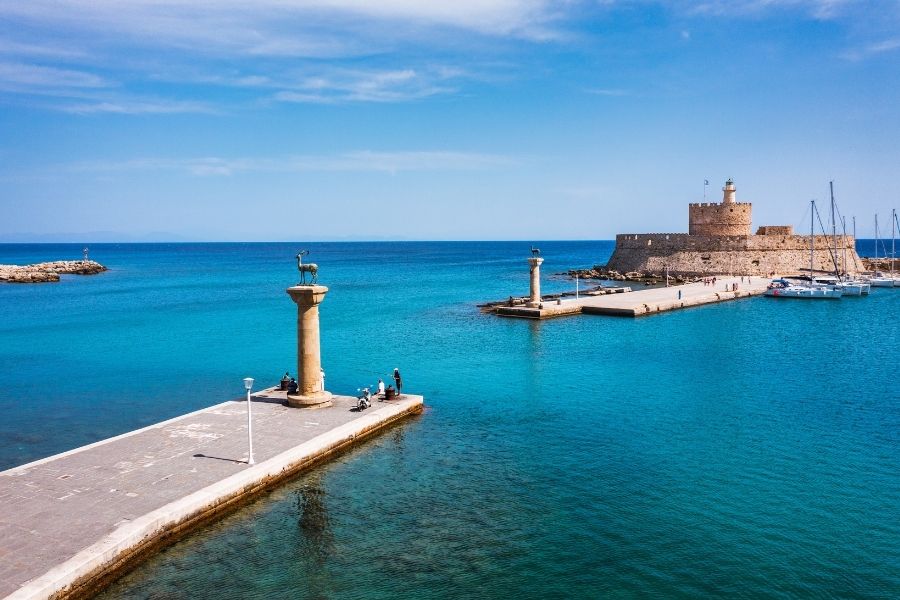
Most ferries didn’t sell out, even in July. That gave me flexibility. Still, I usually booked a week ahead, mostly to lock in decent accommodation prices.
Recommended Tools for Booking Ferries and Accommodation
Ferryscanner quickly became my favorite tool for researching and booking ferries. It pulls schedules from several ferry companies and sends e-tickets straight to your phone.
For places to stay, Booking had way more choices than any other site in the Dodecanese. Many tiny islands barely showed up on other platforms.
I sometimes hunted for guesthouses on Google Maps that weren’t listed anywhere else. This meant calling owners or sending bank transfers, but the deals were often better.
Island-specific Facebook groups helped me find direct deals and local recommendations. Sometimes you just want a washing machine or a kitchen, and locals know where to look.
A few ferry companies still make you collect paper tickets at the port, even if you book online. I always kept a backup plan just in case.
Highlights of the Dodecanese Islands I Visited
My island-hopping trip led me through five incredible Greek islands, each with its own personality—from medieval castles and ancient healing centers to peaceful monasteries and rugged cliffs.
Majestic Rhodes: History, Fortresses, and Old Towns
Rhodes really wowed me with its mix of medieval history and modern life. The Old Town? Absolutely magical.
Strolling through the UNESCO-listed Old Town felt like time travel. The Palace of the Grand Master loomed above winding cobblestone streets and Gothic buildings. I wandered for hours, ducking through ancient gates and exploring the city walls.
The Street of the Knights had me imagining crusaders riding through. Every stone seemed to hold a story, and local guides brought the past to life with their tales.
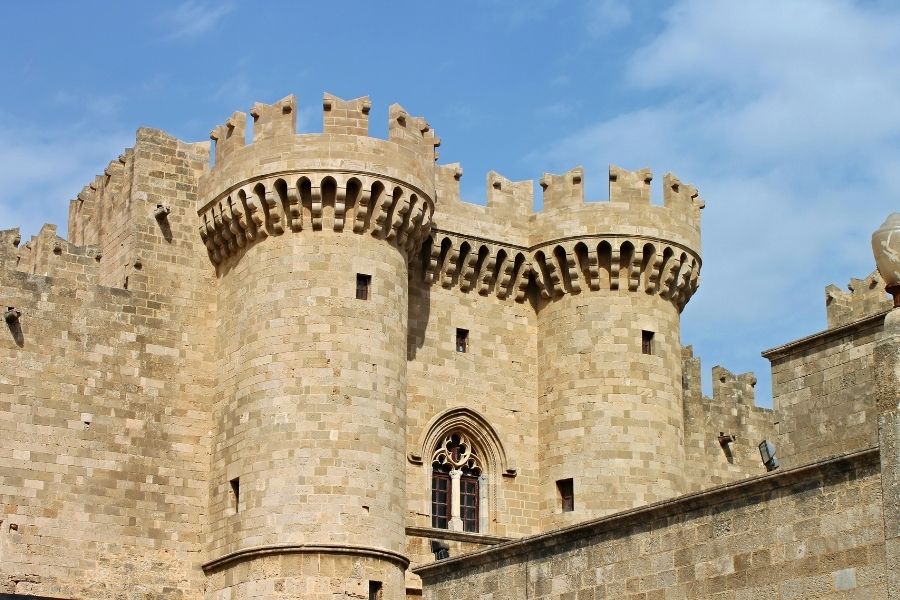
Outside the Old Town, I lounged on beaches and explored lively harbors. Mandraki Harbor—with those famous deer statues—marks where the Colossus of Rhodes once stood. Rhodes became my perfect starting point, balancing history with lazy afternoons by the sea.
Kos: From Ancient Ruins to Lively Harbors
Kos took me by surprise. There’s a deep medical history here, but also a nightlife scene that goes late.
The Asclepieion—an ancient healing center dedicated to Asclepius—became my favorite spot. I climbed up the terraces, picturing ancient patients hoping for a cure.
Kos Town’s harbor buzzes day and night. Seafood restaurants spill onto the promenade, and bars keep things lively until sunrise. I found shade under the plane tree of Hippocrates, catching my breath between ruins.
Thermal springs at Embros gave me a completely different kind of relaxation. I soaked in the hot water while the sea crashed just meters away. Kos blends old and new better than almost anywhere else I’ve been.
Patmos: The Spiritual Island and St. John’s Monastery
Patmos just feels different. There’s a peaceful, spiritual vibe that sets it apart.
The Monastery of Saint John the Theologian dominates the skyline. Inside, I marveled at ancient manuscripts and religious treasures. The library alone is worth the visit.
Standing inside the Cave of the Apocalypse gave me chills. This is where Saint John supposedly received his visions for the Book of Revelation. The tiny chapel built around the cave feels sacred and quiet.
Between monastery visits, I found hidden beaches like Psili Ammos—soft sand, turquoise water, no crowds. The slower pace on Patmos helped me soak up both the history and the natural beauty.
Kalymnos and Leros: Cliffs, Traditions, and Adventure
Kalymnos and Leros brought out my adventurous side. Kalymnos, especially, pushed my limits.
Kalymnos is a rock climber’s dream. Limestone cliffs rise everywhere, drawing climbers from all over the world. I tried climbing for the first time here and totally get why people are obsessed.
Sponge diving traditions run deep. Museums display old gear, and locals tell stories of daring divers. The tavernas serve up recipes passed down for generations—simple, hearty, and delicious.
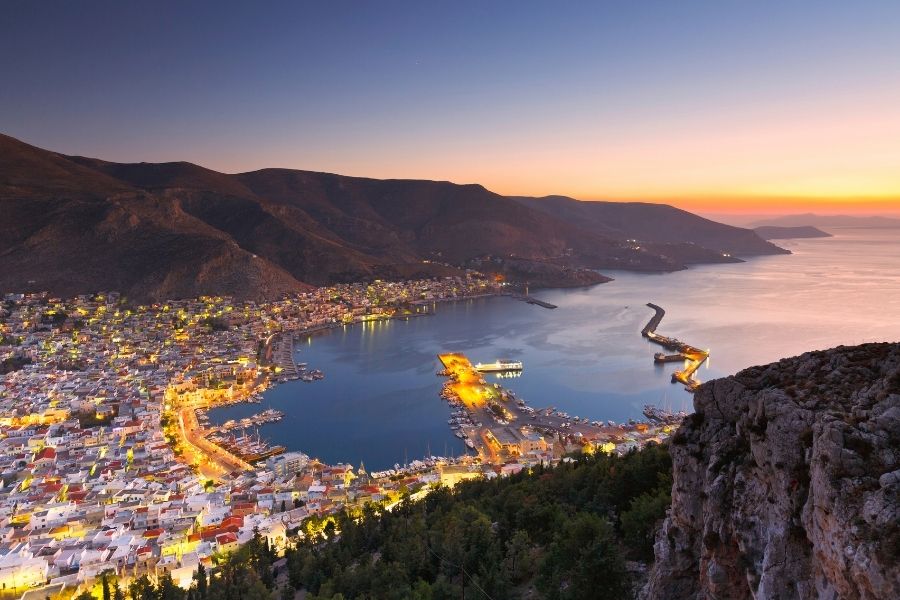
Leros felt like a breather after Kalymnos. The harbor at Lakki, with its Art Deco buildings, has a laid-back charm. Family-run restaurants serve real Greek food, and I never felt like just another tourist.
Unforgettable Day Trips: Symi, Tilos, and Beyond
If you’re based in Rhodes, you can easily take day trips to nearby islands. Each has its own flavor. Symi stuns with its colorful neoclassical harbor, Tilos offers peaceful nature escapes, and Nisyros brings volcanic drama.
Symi: Neoclassical Charms by the Sea
The first time I saw Symi’s harbor, I just stopped and stared. Pastel mansions tumble down the hillside, and honestly, it’s one of the prettiest scenes in Greece.
Gialos, the main port, feels like a living postcard. I wandered cobbled lanes lined with old captain’s houses, each with its own story from the sponge-diving heyday.
Getting There: Ferries from Rhodes take about 1–1.5 hours, and there are plenty each day.
Climbing the 500 steps to Ano Symi (Chorio) nearly did me in, but the views? Totally worth it. I paused for photos and to catch my breath at every turn.
Must-Try Experience: Taxi boats whisk you to remote beaches you can’t reach any other way. Saint George Bay blew me away with its sheer cliffs and crystal water.
Symi’s famous shrimp made for a perfect lunch. I grabbed a table at Tholos Restaurant for the best harbor views and the freshest catch.
I hopped a bus to the Monastery of Archangel Michael Panormitis. It’s right on the water and houses some impressive religious relics. Plus, it’s a peaceful break from the busy port.
Tilos: Tranquility and Nature’s Retreat
Tilos is the opposite of the crowded islands. It’s quiet, laid-back, and exactly the escape I needed at that point in my trip.
Though small—just 63 square kilometers—Tilos packs in amazing biodiversity. I hiked trails where rare birds nest and wildflowers grow everywhere.
Wildlife Highlights:
- Over 150 bird species
- Mediterranean monk
- seals
- Unique local plants
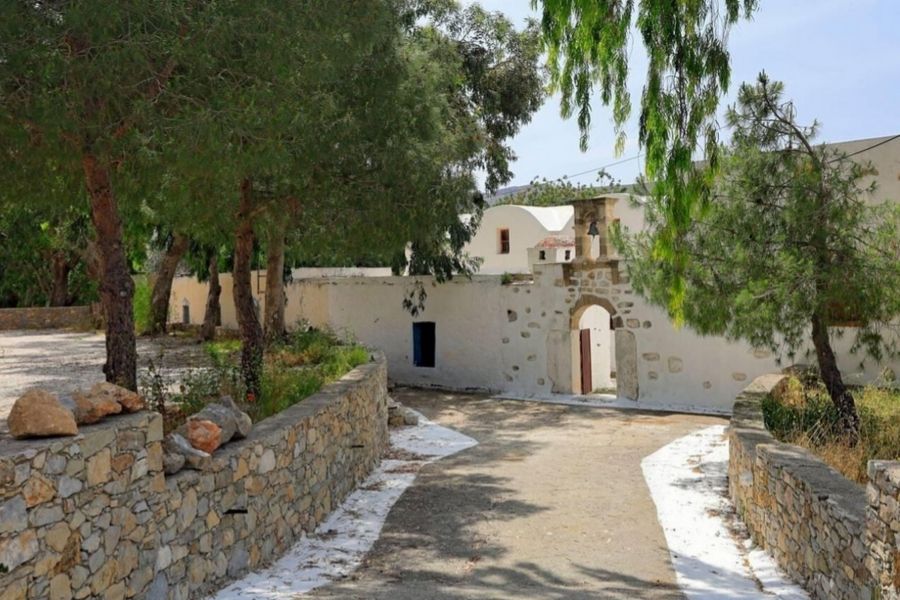
Megalo Chorio, the main village, keeps things traditional. I chatted with locals in old-school kafenions and picked up fruit from tiny family shops.
The beaches stay empty, even in summer. Plaka Beach stretches for ages, and I often had it all to myself.
Livadia port is where ferries from Rhodes arrive. The 2.5-hour journey flies by with all the coastal views.
I stopped by the paleontology museum to see the dwarf elephant fossils. Who knew these creatures once roamed Tilos?
Volcano Adventures on Nisyros
Nisyros is something else. Where else can you walk right into an active volcanic crater?
The Stefanos caldera, at 260 meters across, is massive. I climbed down wooden steps onto the crater floor, where hot gases still hiss through the ground. The colors—yellows, oranges, and whites—make it feel almost alien.
Volcano Facts:
- Last eruption: 1888
- Crater depth: 27 meters
- Still active!
Mandraki village shows off classic Cycladic style with whitewashed houses and blue shutters. I climbed up to the old castle for killer sea views.
Some local tavernas even cook dishes using volcanic heat. I tried bread baked in the natural hot springs and veggies grown in the rich volcanic soil.
Ferry Schedule: Ferries from Rhodes take 3–4 hours each way. You’ll want to spend a full day to see it all.
The Nisyros Museum helped me understand the volcano’s history and the island’s ongoing geological monitoring.
Exploring Hidden Gems Among the Dodecanese
If you’re up for adventure, the smaller Dodecanese islands are full of surprises. I stumbled onto empty beaches, ancient ruins, and villages that feel untouched by tourism.
Halki won me over with its Italianate buildings and car-free streets. Just a 45-minute boat ride from Rhodes, it’s the definition of slow living.
Island Hopping Tips:
- Use Ferryscanner for tickets
- Double-check seasonal ferry schedules
- Pack light for day trips
- Don’t forget sunblock and plenty of water
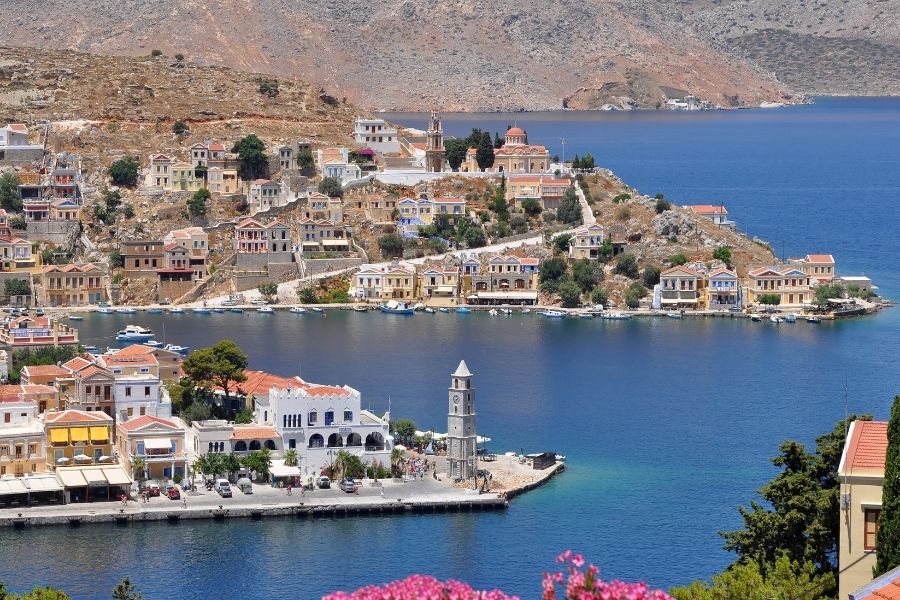
Kastellorizo, Greece’s easternmost island, surprised me with its colorful harbor and how close it sits to Turkey. The blue cave there is a must-see—honestly, it rivals any Mediterranean grotto.
Every island has its own quirks and character. Venetian, Ottoman, and Greek influences blend in unexpected ways, so no two stops ever feel the same.
Small ferries link these far-flung places. I kept my schedule loose, ready to adjust for weather or just stay longer if a spot stole my heart.
Island Hopping Experiences: Ferries, Food, and Local Life
While I bounced around the Dodecanese, I realized ferry schedules pretty much dictate your whole travel rhythm. But honestly, it’s the islands’ food and those spontaneous, warm moments with locals that stick with me long after I’ve left.
Aboard the Ferries: Tips, Connections, and Stories
I relied on Ferryscanner to check schedules and book most of my tickets. Having e-tickets with QR codes on my phone made boarding a breeze.
Ferry Connection Tips:
- Rhodes and Kos act as main hubs, so most ferries run through them.
- I always book tickets 1-2 weeks ahead, especially if I want to secure a place to stay right after arriving.
- A few companies—like Saos Ferries—only let you book at local travel agencies, so keep that in mind.
- Even in July, I never saw a ferry sell out.
That 15-hour ferry ride from Athens to Rhodes? It nearly broke me. If you value your sanity (and time), just fly and start hopping from there.
Inter-island Travel Times:
- Rhodes to Kos: about 2.5 hours
- Kos to Patmos: 3 hours
- Nisyros to Kos: 45 minutes
Ferry staff often shared their favorite spots or pointed out secret coves I never would’ve found alone. A captain once showed me a hidden bay that only locals knew about. I’ve learned to always chat with the crew—those conversations usually led to some of my best discoveries.
Dodecanese Culinary Feasts and Food Traditions
Every island surprised me with something new and delicious—way beyond the usual Greek fare. Kalymnos, for example, totally wowed me with meals inspired by its sea sponge divers: imagine fresh octopus, homemade cheeses, and flavors you just can’t replicate elsewhere.
Island Specialties I Discovered:
- Nisyros: Soumada (that sweet almond drink) and tomatoes grown in volcanic soil.
- Patmos: Monastery honey and Easter cookies that somehow show up year-round.
- Rhodes: Pitaroudia (chickpea fritters) and local wines.
- Symi: Shrimp pasta and panormitiko cheese—so good I went back twice.

I swear by small family tavernas. On Telendos, the taverna owner let me help prep the fish he’d caught that morning. That meal tasted better than anything fancy.
Markets open early. I’d wander through and taste olives or figs that locals packed for the ferry. Vendors taught me how to pick the best by feel or scent—those little lessons stuck with me.
Unique Festivals, Markets, and Island Hospitality
People on these islands really go out of their way to help. I’d get directions, restaurant tips, and even the occasional ride to a remote beach—all without asking.
Memorable Cultural Moments:
- Weekend village festivals with music echoing through the streets.
- Lively fish markets where bargaining happens at lightning speed.
- Coffee shops filled with older men locked in intense backgammon matches.
- Tiny churches, doors wide open, donation boxes tucked by the altar.
One time on Patmos, I wandered into a village festival and ended up dancing with strangers and sampling homemade food. Those spontaneous invites felt like the real heart of island life.
I found accommodation through local Facebook groups, booking directly with owners. It saved me money and led to some real friendships.
Market days change from island to island. Kalymnos bustles on Fridays, while Kos keeps smaller markets going daily. I learned to plan my arrivals to catch the best produce and the liveliest scenes.
Extending the Adventure: Linking Cyclades and Other Greek Isles
It’s surprisingly easy to jump from the Dodecanese to the Cyclades, whether by ferry or flight. You can add famous spots like Santorini or Paros to your trip, or mix in other island groups if you’re feeling ambitious.
Visiting Santorini, Paros, and Naxos From the Dodecanese
For me, Santorini worked best as a bridge from the Dodecanese to the Cyclades. Direct ferries run from Rhodes to Santorini in summer, and it’s a quick 3-4 hour ride.
From Santorini, I hopped to Paros in just 2 hours. Paros feels more laid-back and authentic than its busier neighbors.
Naxos sits an hour from Paros by ferry. I loved Naxos for its old temples, mountain villages, and endless beaches. Honestly, it has a vibe that feels more genuine than the tourist-heavy spots.

Ferry Routes from Dodecanese to Cyclades:
- Rhodes to Santorini: 3-4 hours (summer only)
- Kos to Paros: 5-6 hours via Syros
- Plenty of daily ferries between Cyclades islands
Book ferries early if you’re traveling in July or August. Those routes fill up fast.
Combining the Dodecanese With Other Greek Island Itineraries
I mixed the Dodecanese with three other island groups for a longer adventure. The Saronic Islands are perfect if you’re starting from Athens before heading southeast.
I started with Hydra and Aegina, then caught a flight from Athens to Rhodes. It gave me a great contrast between island styles.
The Ionian Islands sit way out west, so getting there takes a bit more effort. I flew from Rhodes to Corfu, then explored Kefalonia and Zante. Flying saved me a ton of time compared to the ferries.
Multi-Region Itinerary Options:
- Athens → Saronic Islands → Dodecanese (2 weeks)
- Dodecanese → Cyclades → Crete (2-3 weeks)
- Northern route: Thessaloniki → Sporades → Dodecanese (10 days)
Spring and fall are my favorite times for these trips. Ferries run more often and the crowds thin out, making everything feel more relaxed.
Frequently Asked Questions
Travelers always ask me about planning Dodecanese trips. Most want to know when to go, how to fit the best islands into a short trip, and how to find those authentic, non-touristy experiences.
How can one optimize a 14-day Greek island-hopping itinerary to include key Dodecanese landmarks?
Start with Rhodes or Kos since they’re the main ferry hubs. I’d spend 3-4 days in Rhodes—explore the Medieval City and don’t miss Lindos.
Give Kos 2-3 days for its beaches and thermal springs. Make time for Symi, even if it’s just a day trip—the harbor is stunning.
If you’re into hiking and old villages, Karpathos deserves 2-3 days. Patmos is quieter but worth two days for its monastery and peaceful beaches.
Ferry rides usually eat up half a day, so I always factor that into my plans. Trying to cram too much in just leads to burnout.
What is the best month to embark on a Dodecanese island-hopping adventure for ideal weather and cultural experiences?
October wins for me. The weather hovers around 24-25°C, rain is rare, and the crowds have thinned out.
May and September work great too—warm enough for swimming, but not too hot for exploring ruins or hiking.
June to August can get brutally hot, sometimes over 40°C. That’s perfect if you love the beach and nightlife, especially in places like Faliraki and Kardamaina.
Summer also brings strong winds, which kitesurfers love. Karpathos’ Gun Bay is a top spot if you’re into that.
Which hidden gems of the Dodecanese should not be missed during an island-hopping tour?
Leros is a favorite of mine—amazing scuba diving (sometimes 25+ meter visibility!) and pretty mansions in Agia Marina.
Halki feels like the ultimate escape. It’s quiet, with a fishing village vibe and real-deal tavernas.
Astypalea stands out with its butterfly shape and Venetian castle. The photos you’ll get there are unreal.
Nisyros lets you walk right into a volcanic crater and feel the heat and sulfur vents. Not your everyday experience.
What are the essentials of planning a self-guided island-hopping journey through the Dodecanese?
Book your stays ahead, especially on smaller islands like Symi or Leros—they fill up fast in summer.
Use ferry apps or check online for schedules. Some routes only run May through August.
Pack light. I stick to a backpack and a day bag, since I’m always on the move.
Bring cash. ATMs can be scarce and some tavernas still don’t take cards.
Always check the weather before booking ferries. Strong winds can cancel trips with little warning
Can you recommend a route map for a comprehensive Greek island-hopping trip starting from Athens?
Take the overnight ferry from Piraeus to Rhodes—it’s about 12.5 hours and sometimes stops at Cyclades islands like Santorini or Mykonos.
From Rhodes, head north to Symi, then Kos. After that, you can hop to smaller islands like Kalymnos, Leros, and Patmos.
You could flip the route if your timing works better that way. Rhodes makes a good jumping-off point for the southern islands like Karpathos and Tilos.
If you’re short on time, fly into Rhodes instead. You’ll skip a long ferry ride and get straight to the fun.
What are some recommended Greek island-hopping packages available in 2025 that cover the Dodecanese?
Honestly, I usually piece together my own trips for the Dodecanese. It just gives me way more freedom—sometimes you want to linger a day or two longer somewhere, right? Still, I’ve noticed a handful of tour operators now craft packages just for this region.
If you’re browsing, aim for trips that hit Rhodes, Kos, Patmos, and Symi. Those islands really capture the best of the Dodecanese vibe, and the ferry links make things easy. Some packages even toss in a lesser-known spot or two, which is always a nice surprise.
If you’re up for a splurge, consider a yacht charter. You’ll have the run of the sea and can slip into those tiny harbors that big ferries skip. It’s a different kind of freedom—waking up somewhere new every morning.
Double-check what’s included in the package. Some bundle in accommodation and all your ferry tickets, which can take the sting out of high-season prices. That’s saved me a headache or two in the past.

